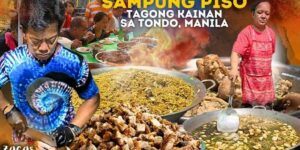Nowadays, when one says he is craving for sweets, milk tea or cookies are usually amongst the top choices. The Philippines’ very own kakanin—our traditional rice cakes—are not only your usual sweet treat but they do offer a lot of variety than the usual snack choices.
Angelo Comsti and Edward Mateo introduce kakanin to this generation through MinatamisPH.
“We initially thought of offering different kinds of ginataan—from ginataang bilo-bilo, mais, and monggo to more regional ones like Bulacan’s paralosdos. We made a deck and presented it to a big shopping mall for possible stall spaces. And then, the pandemic happened,” Angelo shares.
The two changed their minds and in June, MinatamisPH was born.
A gastronomic delight
The first product on their menu is biko. Made with glutinous rice cooked in coconut milk and brown sugar and latik or coconut curds on top, MinatamisPH’s biko has a sweet, deep caramel-y flavor, with just the right texture.
Their other products include sapin-sapin, maja blanca, and cassava cake. They follow the old-school method—no machines, no extenders, and no shortcuts.
Freshly-squeezed coconut milk is used to make latik while actual cassava crop is used for the cassava cake, instead of the usual cassava flour.
Though they started with the more familiar varieties that the partners happen to personally like, they also hope to introduce more regional variants in the future, especially those which are not accessible to people in Manila such as tibuk-tibok of Pampanga, tupig of Isabela, masi of Cebu, inkalti of Ilocos Norte, and bingka of Iloilo.
“I got to learn them and document the recipes when I did my cookbook and so we’re actually ready to produce them,” Angelo explains.
Business has been good since MinatamisPH started.
“Luckily, the people who got to try it first really liked our products, then word of mouth got around,” the partners say.
- Due to Unfair Practices, SEC Bars Lending Firm’s Operation - December 30, 2020
- Motorists Can Use Partially Open Skyway 3, Free for a Month - December 28, 2020
- Monthly Contributions to the SSS’s Mandatory Provident Fund Starts in January 2021 - December 26, 2020





